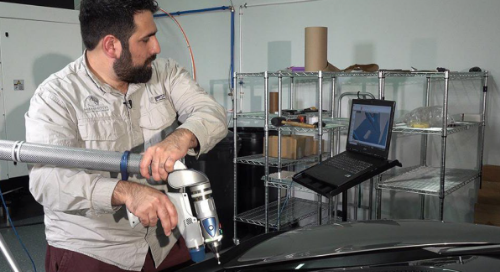As 3D scanning advances, new fields are finding applications for the technology, from more traditional metrology to product development, digital museum archiving and even design for the architecture engineering and construction industry. Reverse engineering, in particular, has been completely revolutionized by the ability to capture data from the physical world and create 3D models from that information, which can then be manipulated and brought back into the physical world using modern fabrication technologies.
If 3D scanning is seeing increased adoption for reverse engineering, it’s important to understand what the technology is and how it works in the real world. In this whitepaper, we take a look at 3D scanning in more detail, with a particular focus on how one company, Mammoth Machine + Design, deploys the technology to reverse engineer unique parts for large-scale manufacturing equipment. In one instance, the firm was able to use 3D scanning to supply a reverse engineered spare part to bring a mass production operation back online in just 24 hours.
